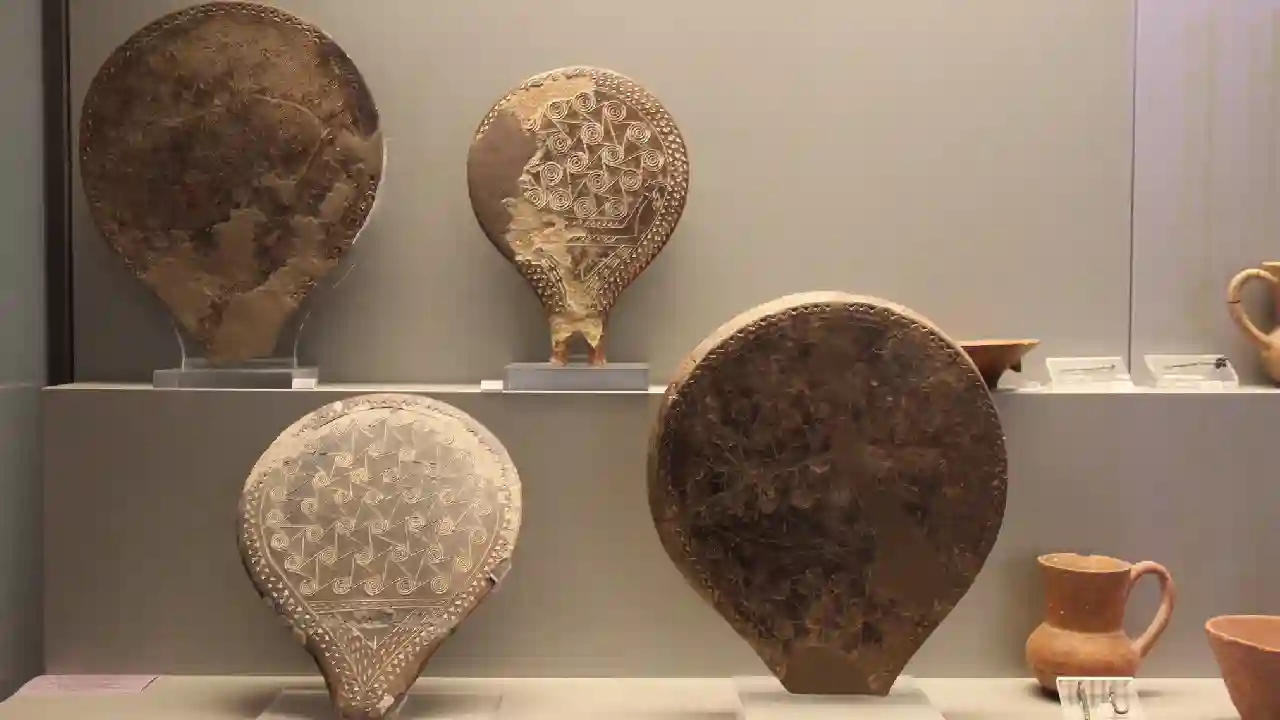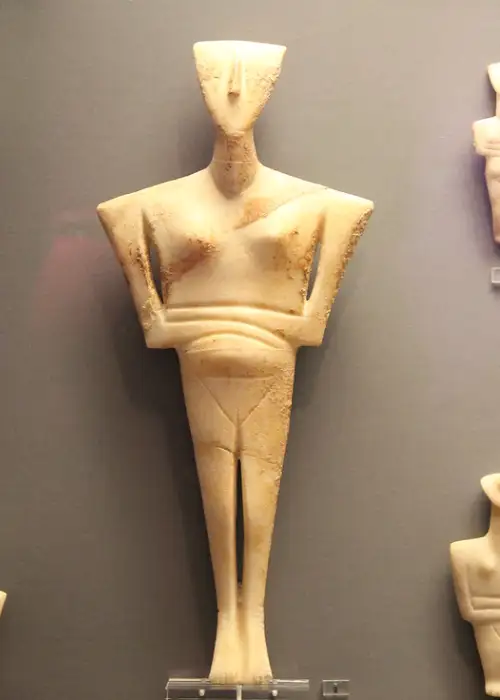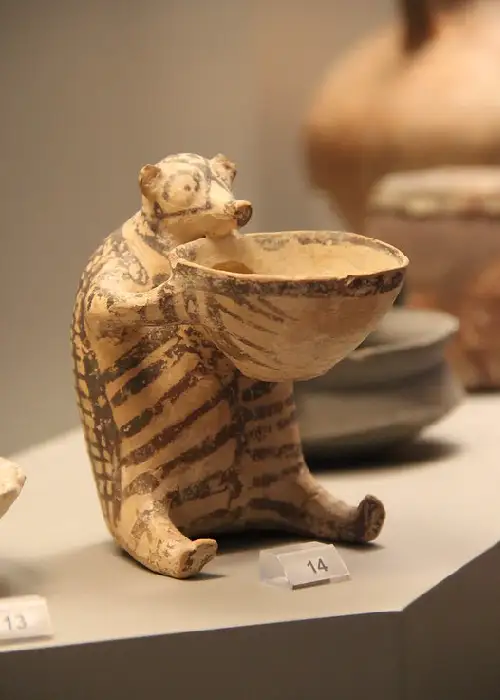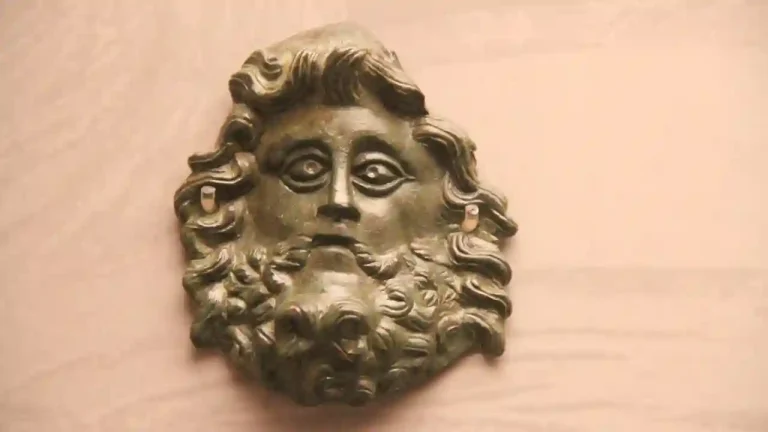Exploring Cycladic Art: Ancient Greek Masterpieces from the Aegean Islands
Cycladic art, emanating from the ancient civilization of the Cyclades archipelago in the central Aegean Sea, holds a distinctive place in the annals of art history. Characterized by its iconic marble figurines and vessels, this art form not only reflects the creativity of the Cycladic people but also continues to influence modern artistic expression. This article delves into the multifaceted aspects of Cycladic art, exploring its defining features, cultural significance, and enduring legacy.
What is Cycladic Art Known For?
Cycladic art is renowned for its iconic marble figurines, often referred to as Cycladic idols. These small sculptures exhibit a unique blend of simplicity and elegance, characterized by smooth, geometric shapes and minimalistic features. The art form also includes marble vessels, showcasing the Cycladic people’s mastery in working with this prized material.
What is the Meaning of the Cycladic Idol?
The exact meaning of the Cycladic idol remains a subject of scholarly debate. These figurines, typically featuring a flat, triangular head and folded arms, have sparked various interpretations. Some scholars suggest a funerary purpose, associating them with burial rituals, while others propose religious significance. The mystery surrounding the meaning adds to the allure of Cycladic art.
What Defines the Style of Cycladic Island Works of Art?
Cycladic art is defined by its minimalist and abstract style. The figurines and vessels exhibit smooth, rounded forms, devoid of intricate details. The emphasis on simplicity and geometric shapes sets Cycladic art apart and contributes to its timeless aesthetic appeal.
Why Was Cycladic Art Abstract?
The abstraction in Cycladic art may be attributed to a desire for symbolic representation rather than naturalistic depiction. The emphasis on essential forms could have served ritualistic or religious purposes, allowing for a broader, more symbolic interpretation.
Why Are They Called Cycladic?
The term “Cycladic” is derived from the Greek word “kyklos,” meaning circle. It refers to the circular arrangement of islands in the Cyclades archipelago. These islands include well-known locations such as Naxos, Paros, and Syros, forming a distinctive circle in the central Aegean Sea.
How Did Cycladic Art Influence Modern Art?
The minimalistic elegance of Cycladic art has had a profound impact on modern art. Influential artists such as Pablo Picasso and Henry Moore drew inspiration from Cycladic figurines, incorporating elements of abstraction and simplicity into their own works. The timeless appeal of Cycladic art continues to resonate with contemporary artists.
What Is the Difference Between Cycladic Art and Minoan Art?
While both Cycladic and Minoan cultures coexisted in the Bronze Age Aegean, their artistic styles differ. Cycladic art is known for its abstract, minimalist forms, whereas Minoan art, particularly that of Minoan Crete, is characterized by more detailed and naturalistic representations. Minoan art often depicts vibrant scenes of nature, animals, and human activities.
When Did Cycladic Culture End?
The Cycladic culture experienced a decline around 2000 BCE, marking the end of the Early Bronze Age. The reasons for the decline are complex and may involve factors such as environmental changes, economic shifts, or interactions with neighboring civilizations.
How Did the Greeks Change Art?
The ancient Greeks played a pivotal role in shaping the course of art history. Their contributions include the development of classical art, characterized by a focus on idealized human forms, balance, and proportion. Greek art also introduced narrative elements, capturing myths, historical events, and everyday life. The enduring legacy of Greek art laid the foundation for Western artistic traditions and continues to influence art and culture worldwide.
Conclusion: A Timeless Legacy
In summarizing the exploration of Cycladic art, we unveil a chapter that remains etched in the rich tapestry of ancient Greek culture. The allure of the enigmatic Cycladic idols, marked by their minimalist elegance, continues to captivate scholars and art enthusiasts alike, fostering a dialogue that surpasses temporal boundaries.
The Cultural Echo of “Cycladic”
The term “Cycladic” not only signifies a specific geographical region but also encapsulates a cultural legacy that has indelibly shaped the trajectory of artistic expression. Even as the Cycladic civilization gradually faded around 2000 BCE, its artistic contributions endured, leaving an enduring impact on subsequent cultures and resonating with artists who sought inspiration beyond the constraints of their era.
Cycladic Art in Dialogue with Contemporaries
While Cycladic art shares the historical stage with contemporaneous cultures like the Minoans, the distinctions in style, representation, and cultural context set it apart. The evolution from the abstract simplicity of Cycladic art to the intricate, narrative focus of Minoan art underscores the diverse artistic landscape within the broader Aegean region.
Transition and Endurance in the Aegean
The conclusion of Cycladic culture marked a pivotal transition in the Bronze Age Aegean, yet its legacy endured. The ancient Greeks, inheritors of the Cycladic tradition, played a transformative role in the evolution of art, paving the way for classical art with their pursuit of idealized forms, balance, and narrative storytelling.
Cycladic Art: A Global Influence
As we reflect on the journey of Cycladic art, from the circular archipelago of the Cyclades to its enduring global influence on contemporary art, we acknowledge its timeless significance. The Cycladic idols, once imbued with mysterious purpose, now stand as silent witnesses to the enduring power of human creativity and the ever-evolving nature of artistic expression.
-
Museum of Cycladic Art: A Journey to Ancient Aegean Culture
Nestled in the heart of Athens, the Museum of Cycladic Art stands as a beacon of ancient Aegean heritage and artistic brilliance. From its inception, this institution has captivated visitors with its unparalleled collection of Cycladic art, offering a glimpse into a civilization lost to time. Embark on a virtual tour with me as we…











